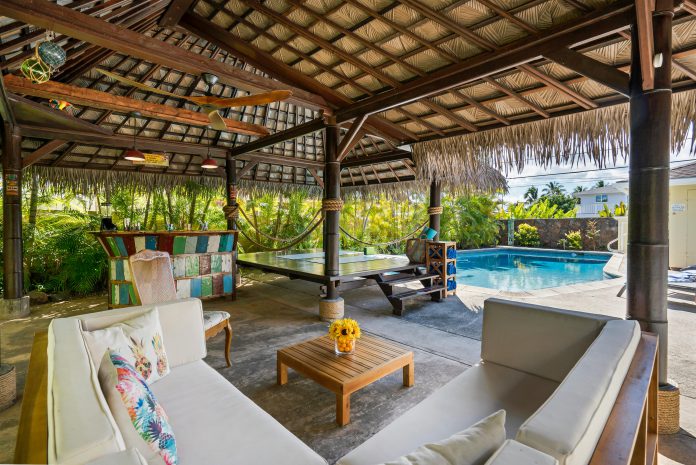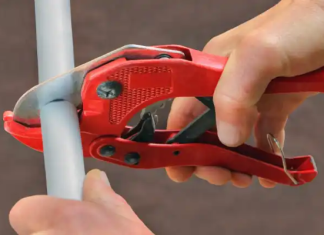Designing your home outdoor space can transform your yard into a functional and beautiful extension of your living area. Whether you have a small patio or a sprawling garden, thoughtful planning and creative ideas can maximize the potential of your outdoor environment. This guide provides helpful tips to inspire and guide you through the process of creating an outdoor space that meets your aesthetic preferences and lifestyle needs. From choosing the right furniture to incorporating greenery, these tips will help you design an outdoor space that you and your family will enjoy for years to come. This article explores the essential elements that contribute to a well-designed outdoor area.
Choose the Right Furniture
The key to making your outdoor area cozy and welcoming is picking out the right furnishings. Pick pieces of furniture that complement the room’s design without taking over. Choose materials that are resistant to the elements and don’t need much upkeep, such as synthetic wicker, teak, or aluminum. Think about the primary use of your outdoor space—whether it’s for dining, lounging, or entertaining guests—and choose furniture that supports these activities. Adding cushions and throws in weatherproof fabrics can enhance comfort and add a touch of style to your outdoor seating.
Create Zones for Different Activities
You can make better use of and enjoy your outdoor area by dividing it into several zones. For instance, set up a dining space with a table and chairs, a lounge area with comfy seats, and a third area for cooking, whether you have an outdoor kitchen or grill. Rugs, plants, or lights may serve as visual markers to help you demarcate these areas. Making separate sections helps with space organization and guarantees that everything has its proper place. Even with a little yard, this zoning method may make it seem roomier and more functional.
Incorporate Kitchen Kits
Incorporating kitchen kits can significantly enhance the design and functionality of your home’s outdoor space. Prefab outdoor kitchen kits provide a convenient and streamlined solution for creating a complete cooking area, including essential features like grills, sinks, and storage. These kits are designed to withstand outdoor conditions, ensuring durability and longevity while maintaining a stylish appearance. By opting for kitchen kits, you can enjoy the ease of installation and customization to suit your specific needs and preferences. This addition not only elevates your outdoor living experience but also increases the overall value and appeal of your home.
Focus on Lighting
Good lighting can extend the usability of your outdoor space into the evening hours and create a warm, inviting atmosphere. Use a combination of ambient, task, and accent lighting to illuminate different areas effectively. String lights, lanterns, and solar-powered garden lights can add a magical touch to your outdoor area. Ensure pathways and steps are well-lit for safety, and consider installing dimmable lights to adjust the mood as needed. Proper lighting enhances the functionality and ambiance of your outdoor space, making it a perfect spot for evening gatherings.
Add Personal Touches
Personalizing your outdoor space with unique touches can make it feel more like an extension of your home. Consider incorporating elements that reflect your personality and interests, such as art, sculptures, or DIY projects. Use outdoor rugs, cushions, and décor in your favorite colors and patterns to create a cohesive look. Adding a fire pit or a water feature can serve as a focal point and gathering spot for family and friends. Personal touches not only make your space unique but also increase your enjoyment and connection to the area.
Ensure Privacy
Creating a sense of privacy in your outdoor space is essential for relaxation and comfort. Use fences, walls, or hedges to create boundaries and block unwanted views. Pergolas, trellises, and climbing plants can also add a layer of privacy while enhancing the aesthetic appeal. Consider installing outdoor curtains or screens that can be adjusted as needed. Ensuring privacy helps create a more intimate and secure environment where you can unwind and entertain without feeling exposed.
Plan for All Seasons
Designing your outdoor space to be usable year-round increases its value and functionality. Consider adding elements like heaters, fire pits, or weather-resistant covers to make the space comfortable during colder months. Shade structures like umbrellas, pergolas, or retractable awnings can provide relief from the sun during summer. Choose plants that thrive in your climate and require minimal upkeep throughout the seasons. Planning for all-weather use ensures that your outdoor space remains inviting and practical regardless of the time of year.
Incorporate Functional Elements
Including functional elements in your outdoor design can enhance the usability and convenience of the space. Think about installing an outdoor kitchen or bar area if you enjoy cooking and entertaining outside. Storage solutions like built-in benches or storage boxes can keep your space tidy and organized. Consider adding a dining table with an umbrella or a cozy lounge area for relaxation. Functional elements should be tailored to your lifestyle and how you plan to use the space, ensuring it meets your practical needs while still looking great.
Maintain a Cohesive Design
Maintaining a cohesive design throughout your outdoor space creates a harmonious and visually appealing environment. Stick to a consistent color palette and design theme that complements your home’s exterior. Use materials and finishes that blend well together, creating a seamless transition between different zones. Repeating elements like plants, furniture styles, and decorative accents can tie the space together. A cohesive design ensures that your outdoor space feels well-planned and thoughtfully executed.
Consider Sustainability
Incorporating sustainable practices in your outdoor design can benefit both the environment and your budget. Use eco-friendly materials, such as recycled wood or composite decking, and choose energy-efficient lighting options like solar-powered lights. Implement water-saving techniques like rain barrels or drip irrigation systems for your garden. Select native plants that require less water and maintenance, and consider composting to enrich your soil naturally. Sustainable practices create a greener, more cost-effective outdoor space that aligns with environmentally conscious living.
Conclusion
Designing your home outdoor space can be a rewarding project that enhances your living environment and provides a beautiful area for relaxation and entertainment. By carefully selecting furniture, creating functional zones, incorporating kitchen kits, and focusing on lighting, you can transform your yard into a welcoming and practical space. Personal touches, privacy considerations, and planning for all seasons further enhance the usability and enjoyment of your outdoor area. A cohesive design and sustainable practices ensure that your space is not only stylish but also environmentally friendly. With these tips, you can create an outdoor haven that complements your home and lifestyle perfectly.















